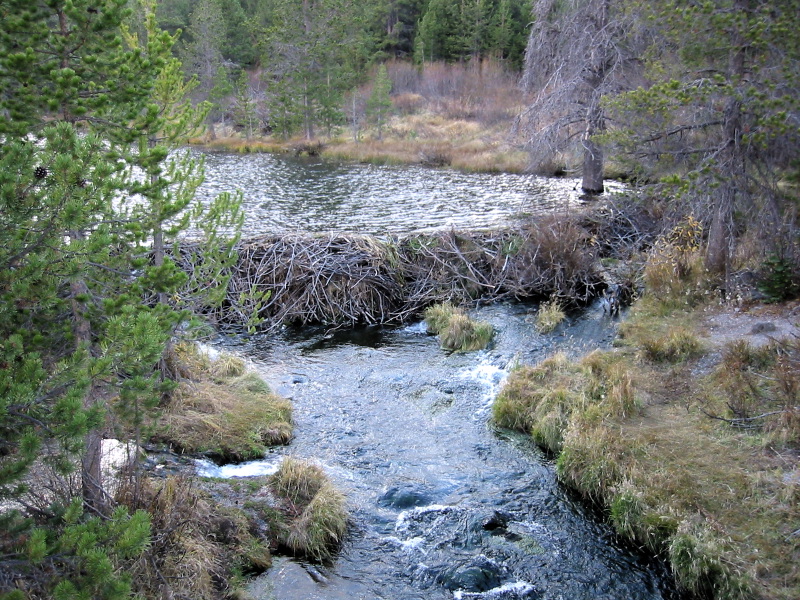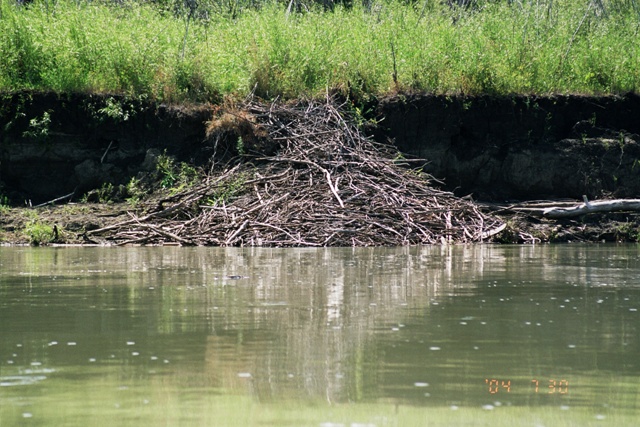
Habitat
When beavers are looking for a place to live, they normally chose an area where the banks of the river or stream are pretty high and close to each other so that a dam can be made. The beavers then take loads of brush out to the middle of the current and weigh them down with mud, stones, and anything else they can find. They continue to pile on to the heap until it becomes wedged between the banks. The upstream side of the dam is then covered with mud so that no water can seep through. Beaver dams are usually up to six feet higher than the surrounding banks.
Once the beavers have finished the main dam, they construct another dam down the stream but close to the first one so that all of the pressure isn’t on one dam. This also prevents water loss. The dams allow for the beaver colony to swim up and down the stream safely and easily.
Beavers then build dens in which they live. These can be built in as little
as two nights. They prefer to build them in the middle of the
water so they are safe from terrestrial predators. The dens are
very wide at the bottom and are in a teepee shape. Each den is
built with two ways in and out so that they can escape in case a
predator comes in. Dens also have a hole in the top that would
compare to a chimney in a house. This allows for air to
circulate so that the den isn’t full of stale air. When inside
the dens beavers stand on a platform that is above water level.
They take old material that is no longer good and put it into
the plunge holes; along with this, they continually bring new
material in. They also take their bedding and soak it in water
for a few hours and then place it back in the den. While the
colony may reside in more than one den during the summer, they
often only live in one den during the winter. During the winter,
the den freezes which aids in the protection against predators.
Trails are another huge part of the beaver habitat. They form
trails in areas where they repeatedly leave the water in search
of food and other materials. These trails often become canals
which are of great assistance. Canals are created where trails
are worn down so far that they start to fill with water. They
allow beavers to move materials that are inland back to the
water. The materials are often too large and heavy to take
a long ways without a canal.
inside
the dens beavers stand on a platform that is above water level.
They take old material that is no longer good and put it into
the plunge holes; along with this, they continually bring new
material in. They also take their bedding and soak it in water
for a few hours and then place it back in the den. While the
colony may reside in more than one den during the summer, they
often only live in one den during the winter. During the winter,
the den freezes which aids in the protection against predators.
Trails are another huge part of the beaver habitat. They form
trails in areas where they repeatedly leave the water in search
of food and other materials. These trails often become canals
which are of great assistance. Canals are created where trails
are worn down so far that they start to fill with water. They
allow beavers to move materials that are inland back to the
water. The materials are often too large and heavy to take
a long ways without a canal.
Beavers share their habitat with many other organisms too! These include the white tailed deer, wood duck, mallard, and many more. On the other hand, some of the organisms they share their habitat with are predators, such as the black bear, red wolf, and cougar.

